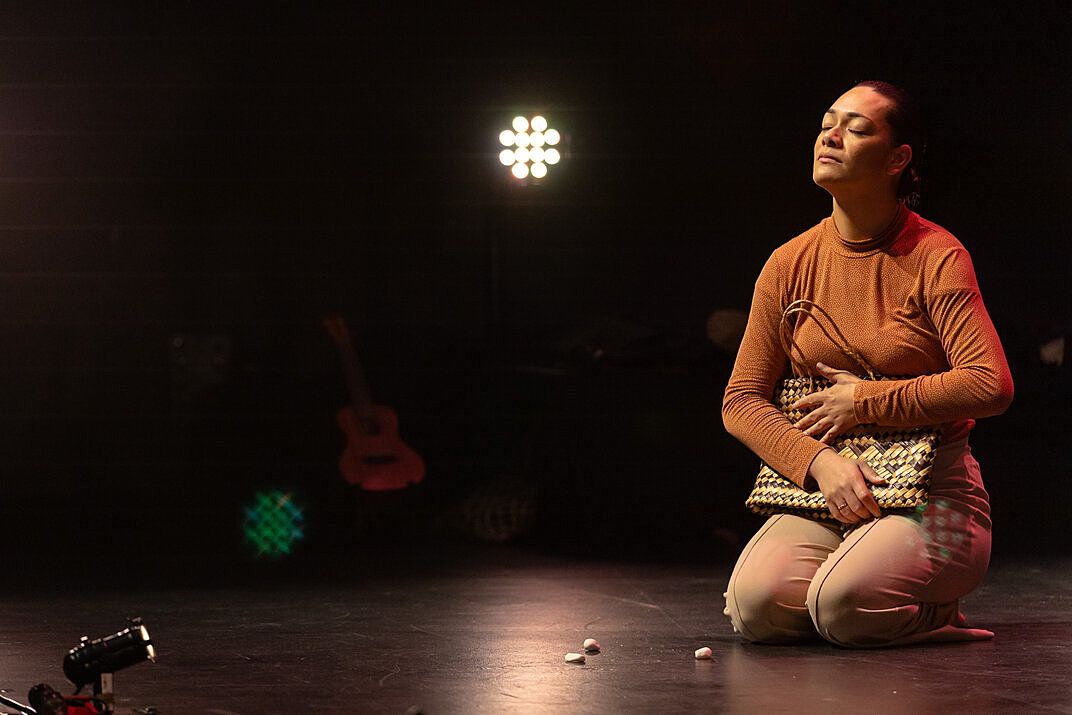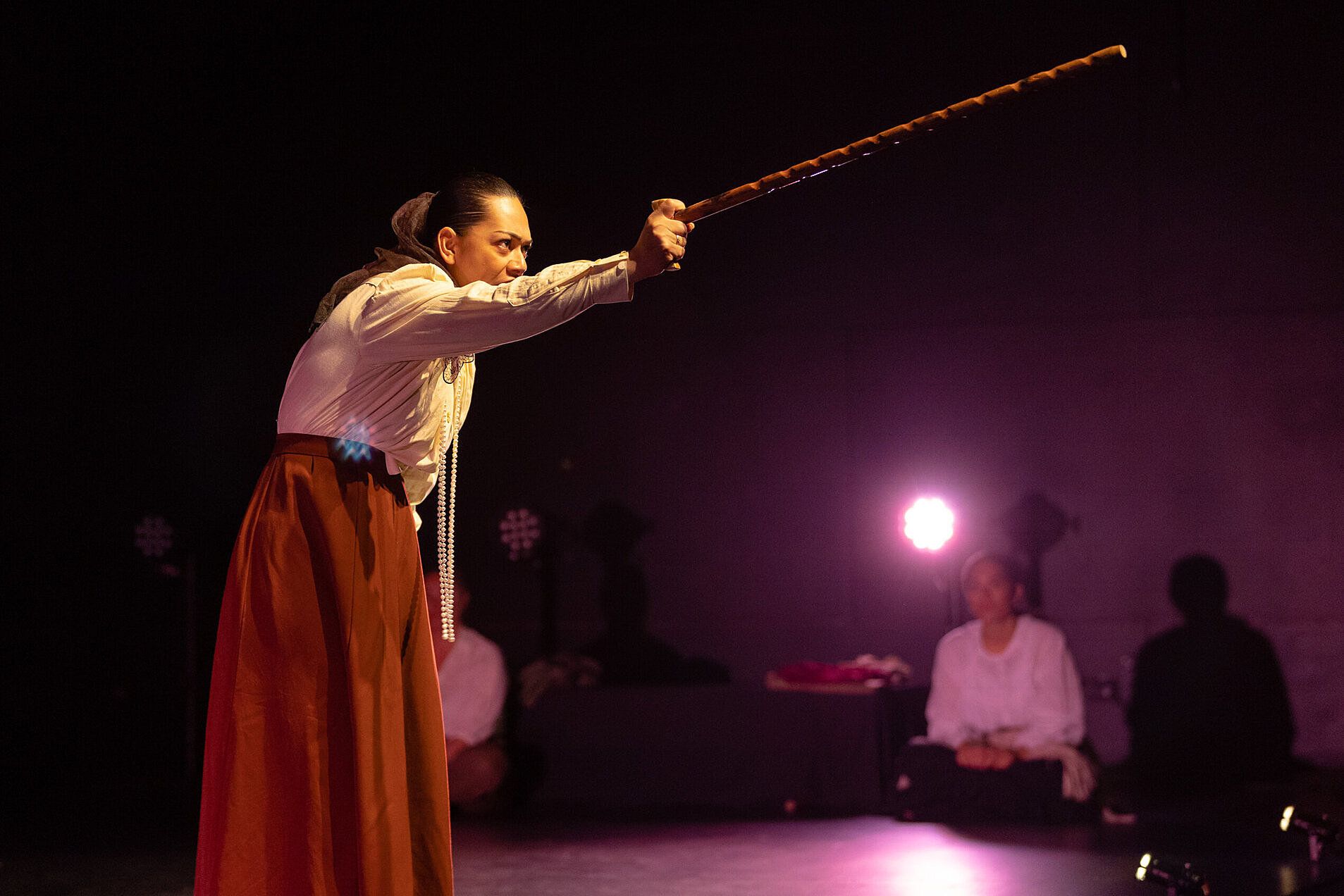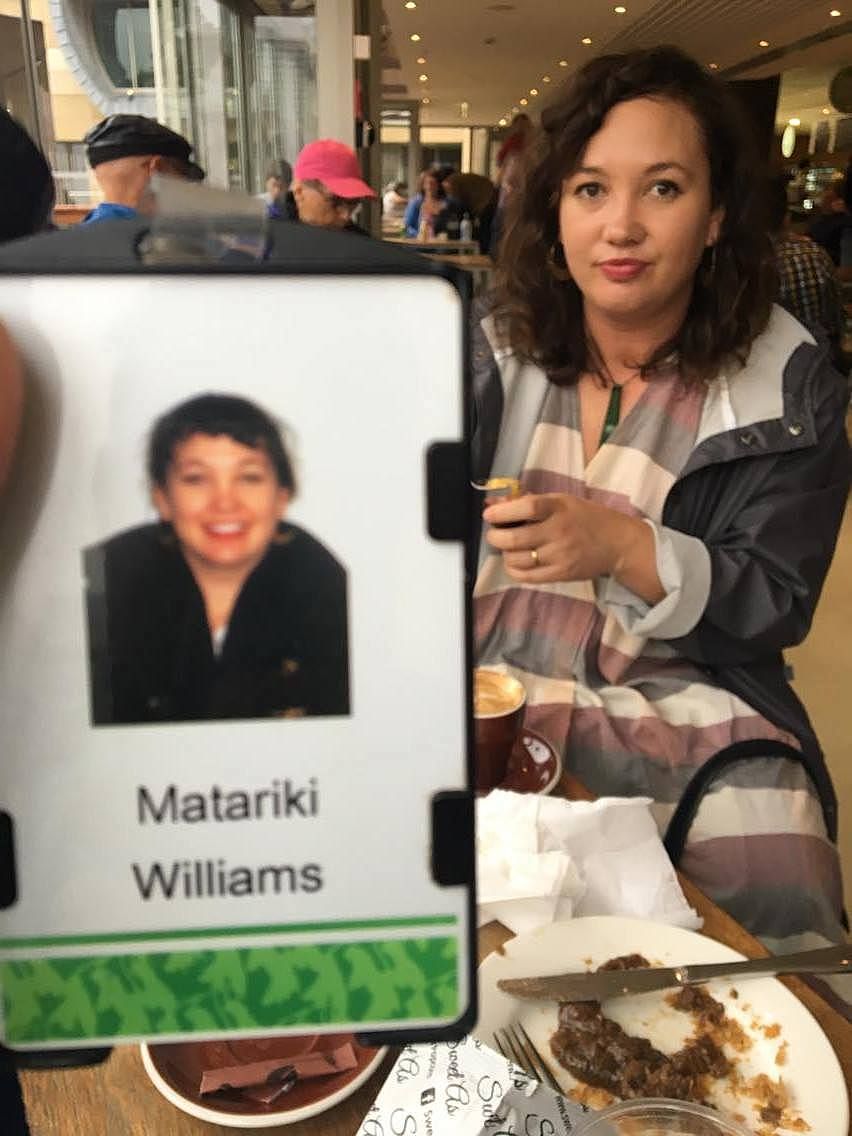Epiphanies of Illumination: A Review of Witi’s Wāhine
Matariki Williams is transported into the micro-universes of Witi Ihimaera’s characters, brought together in a play by Nancy Brunning.
There was a moment during Witi’s Wāhine when I found myself trying to place the scene unfolding onstage; had I watched this onscreen, or had I read it? Such is Witi Ihimaera’s (Te Aitanga-a-Māhaki, Tūhoe, Te Whānau-a-Apanui) prowess with words that I didn’t know whether the scenes replaying in my head were facsimiles of a screen performance, or had been conjured in my mind while reading his books.
This is the power of the storytelling in Witi’s Wāhine. Despite the sparse set and minimal costume changes, the cast (Roimata Fox, Awhina Rose Ashby, Olivia Violet Robinson-Falconer and Pehia King) took us into the micro-universes of Ihimaera’s making: from the great Ocean of Kiwa, to the tiny East Coast town of Waituhi, to the expanses of the Commonwealth graves in Tunisia. These scenes, the changes of which were undertaken through the medium of waiata, were skeletons onto which Ihimaera’s words were placed to fill the visual gaps. With a maroon tracksuit, Robinson-Falconer became a hockey coach berating her team with aroha, and I saw the paddocks of Waituhi emerge around her. With a veil and Victorian blouse, Ashby transformed into the fierce matriarch Riripeti; armed with a tokotoko, she stalked the stage, and the whare of silenced koroua I had visualised melted away from her glare. Witi’s Wāhine showcases the taonga that is Māori storytelling.
Here is where I declare my immeasurable love for Ihimaera’s words
.
Here is where I declare my immeasurable love for Ihimaera’s words; they have kept me company for over two decades. My heart swelled to see the beloved characters of Miro Mananui and Maka tiko bum (not her real name) come to life in front of me, and cheat each other in their game of cards. These nannies were based on Ihimaera’s real-life nannies, who were eventually buried alongside each other like the two who feature in A Game of Cards from Ihimaera’s anthology Pounamu Pounamu.So beloved are these characters that the recognition of their presence was palpable amongst the audience, to the point where the actor narrating the scene broke the fourth wall and provided the backstory to this scene and these characters.
This breaking of the fourth wall, which happened in the opening scene when each actor did a mihi to the audience, caused me to wonder at the malleability of the fourth wall as a device of theatre. What is the role of tikanga in theatre? I ask this, as it felt entirely normal to be greeted by the cast and their iwi whakapapa within the construct of a performance. Not after or before, but part of. Acknowledgement via mihimihi is something I have only experienced in Māori theatre and I love to think that there is a reclamation of sorts occurring wherein Māori theatre makers are making the fourth wall permeable to tautoko the enactment of tikanga. Perhaps it is because this storytelling is real to us. In each of the characters in Witi’s Wāhine are bits of our own nannies, aunties, mothers, cousins and sisters.
After the play, a benefit of opening-night viewing, Ihimaera took to the stage alongside the cast and director Waimihi Hotere (Te Aupōuri, Ngāti Maniapoto, Ngāti Wai). He implored us to think of the wāhine in our lives, who they were and who we wish they were. Crucially, we were entreated to think of the creator of this show, the late and dearly missed Nancy Brunning (Ngāti Raukawa, Ngāi Tūhoe). Witi paid tribute to the magic of her words, and how they brought to life the wāhine in his pūrākau.
Acknowledging our arts not just for their storytelling strength but their history-telling strength
.
This is where I want to end, acknowledging our arts not just for their storytelling strength but their history-telling strength. In particular, the segment of the play that told the heart-wrenching truths of what happened to Rongowhakaata tīpuna at Ngātapa Pā. This is the second time I have seen a theatrical depiction of this history, the first being Teina and Ngapaki Moetara’s All Roads Lead to Ngātapa.It is through theatre that I have witnessed the ferocity of this history where, in 1868, Colonel George Whitmore and his forces killed the people at Ngātapa Pā, wāhine mā, kaumātua mā, tamariki mā. Rather than questioning why these histories must be told via the arts for us to know them, I want to mihi to Teina, Ngapaki, Witi and Nancy for telling them at all.
This scene was the best expression of the cast’s opening dialogue, in which they revealed the motivations for the play. Witi’s Wāhine aims to re-insert the mana into the wāhine characters of Ihimaera’s writing, mana that had been taken from them in other adaptations. Rather than being in the shadow of male characters or having their names removed (like Kahutia-te-Rangi of The Whale Rider, who became Paikea in the movie version), these wāhine have their stories fleshed out in Witi’s Wāhine. The scene at Ngātapa made good the play’s aspiration without overtly stating it. Indeed, it went further, by making real the histories that have been inherited by subsequent generations of Rongowhakaata.
There is so much to love in this play, but for me, what is supreme is the power of the word. Ihimaera’s singing words, his worldly words, Brunning’s magical additions to these words, and the ways they manifest in our minds and on the stage.
4 – 19 June 2021
*
This piece is presented as part of a partnership with Kia Mau Festival. They cover the costs of paying our writers while we retain all editorial control.




